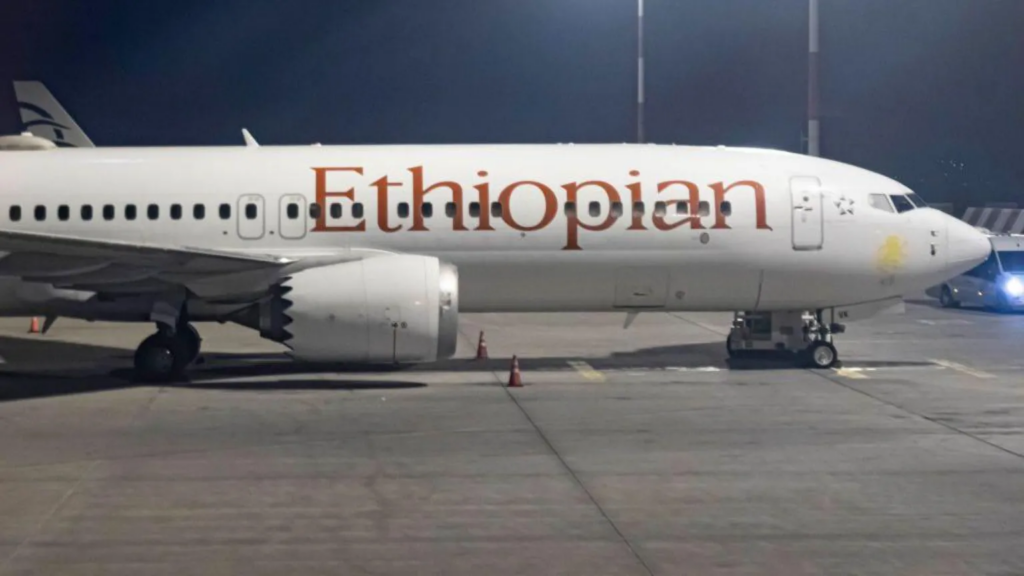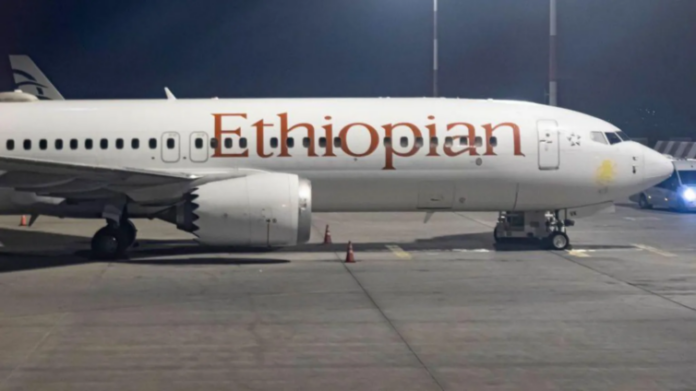A US campaign group has accused Boeing of concealing information about electrical problems on a plane that later crashed.
The Foundation for Aviation Safety claimed the aircraft, which went down in Ethiopia in 2019, had suffered a number of issues, including an “uncommanded roll” at low altitude.
The organisation said more than 1,000 planes currently flying could potentially be at risk of electrical failures as a result of production problems.
The foundation’s claims relate to an aircraft which hit the ground minutes after take-off from Addis Ababa in March 2019.
The plane was a 737 Max, at the time a brand-new model. It was the second of its type to be lost, following a previous accident off Indonesia in late 2018.
A Boeing spokesperson said that following the Ethiopian Airlines Flight 302 accident in 2019, it “fully cooperated and provided relevant information to the investigation”.
“We defer to the investigative agencies for further information,” they added.
Both crashes were primarily attributed to a poorly designed flight control system, which activated at the wrong time due to a sensor failure.
The foundation has published a number of documents on its website, which it says are build records for the aircraft involved in the Ethiopian accident, leaked by Boeing employee
The documents, which are highly technical, set out problems encountered during the construction process.
The foundation claims they “paint a clear picture of the confusing and chaotic production operations going on at the 737 factory when this airplane was being manufactured.”

According to the foundation, among the apparent issues indicated by the documents are a lack of electrical parts, missing and improperly installed wiring, and employees being placed under extreme pressure to rework defective parts.
The foundation claims this connects to electrical issues it says were suffered by the plane in the weeks and months leading up to the crash.
A further document allegedly describes an incident involving the same aircraft, three weeks after it had been delivered to its owner, Ethiopian Airlines.
A record of communications between Boeing and the airline, it sets out how the plane suffered an “uncommanded roll” at low altitude while preparing to land.
This was later attributed to an intermittent fault with wiring, according to the foundation.
The Foundation for Aviation Safety claims these documents were concealed from “government authorities, law enforcement, airline customers, victim families, and the public”.
It suggests that as a result, systemic production quality problems at Boeing’s factory were allowed to persist, leading to issues such as the blowout that affected an Alaskan Airlines flight at the beginning of this year.
The foundation is led by Ed Pierson, a former manager at Boeing’s 737 factory in Renton, Washington State.
He became a prominent figure in the wake of the two 737 Max accidents, testifying before US lawmakers on a number of occasions.
Mr Pierson has consistently maintained that serious production issues at the factory played a key role in the two crashes – a claim Boeing has repeatedly denied.
The official investigation into the Ethiopian accident, carried out by the country’s Accident Investigation Bureau, appeared to back up this view. It suggested production-related defects were responsible for the sensor failure that ultimately triggered the crash.
However, this version of events was rejected by the US agency the National Transportation Safety Board, which said there was no evidence for it, and attributed the sensor failure to an impact with a foreign object, probably a bird.
Company insiders at Boeing also reject the claim that documents have been concealed, and maintain that multiple investigations have not validated Mr Pierson’s allegations.
Earlier this month, Boeing’s new chief executive Kelly Ortberg said he planned to focus on restoring trust in the business.
He added he would base himself in Seattle, in order to be close to the factories, rather than in the company’s Arlington headquarters.
The company has been ordered to carry out a “corrective action plan” by US regulators at the Federal Aviation Administration (FAA), to improve safety and quality control.
But during a call with journalists, Mr Pierson said reports from people within the factory alleged that efforts to improve conditions on the production line had so far been “woefully inadequate” – largely because FAA inspections were known about well in advance and could be prepared for.
Source: BBC
ALSO READ:

